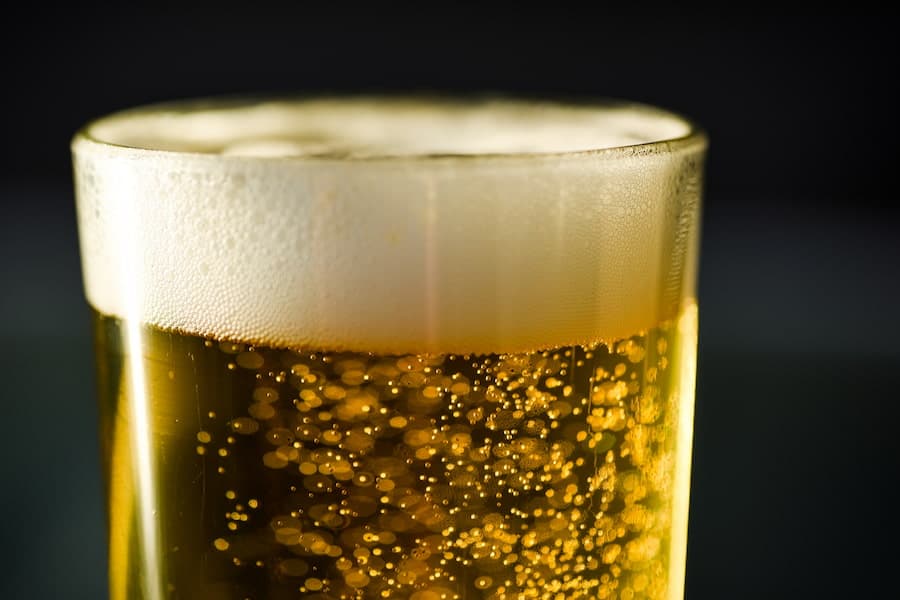If you buy something through a link in our posts, we may get a small share of the sale.
Homebrewing is fun and exciting. As you continue making beer and want to move on from the basics, you’ll come across the need for priming sugar. After all, you want your beer to be carbonated and have that lovely fizz. Fizz Drops vs priming sugar, what is the comparison?
Contents
Fizz Drops vs Priming Sugar
A quality batch of beer is not complete without the perfect amount of carbonation. Most homebrewers achieve this by adding a small amount of sugar before bottling the beer. This is known as priming sugar. It ensures the carbonation process, without which your beer would be flat.
However, if you don’t have the time or patience to wait for the bottled beer to carbonate, you can instead use Fizz Drops. These are small drops of concentrated sugar that will have your beer carbonated within just a few hours. They work by using a unique encapsulation technique that keeps the sugar safe until it reaches your beer.

The two processes are similar in many ways; however, there are some differences in the amount of sugar required and how they work. Therefore, you need to decide which is the best option for you and your beer so that you can get the perfect fizz.
Fizz Drops
Also known as carb drops or carb tabs, Fizz Drops are small droplets of pure sugar. They come in a small pack, and each drop contains the same amount of sugar. This makes them perfect for those who want a consistent level of carbonation in their beer.
Fizz Drops work by using a process known as ‘encapsulation.’ This means that the sugar is surrounded by a thin film, which protects it from the beer. The film only breaks down when it comes into contact with the beer, releasing the sugar and starting the carbonation process.
This is an excellent option for those who want to carbonate their beer quickly. However, it is worth noting that not all drops are created equal. Some brands use cheaper ingredients, which can affect the taste of your beer. Therefore, it is important to research and choose a quality brand that uses only the best ingredients.
Pros
- It is easy to use as you just add it to your bottle and shake
- You can control the amount of fizz by adding more or fewer drops
- It gives a consistent level of carbonation every time
- It can be used in a wide range of beers, including stouts, IPAs, and craft beers
Cons
- The varying size of the drops can make it difficult to get an accurate measurement
- The taste of your beer can be affected by the quality of the Fizz Drops
Priming Sugar
Priming sugar is a standard ingredient in home brewing as it provides an easy method of carbonating your beer. It is simply sugar that is added to your beer before bottling so that it can start the carbonation process.
The sugar will react with the yeast in your beer and produce carbon dioxide. This gas will then become trapped in the bottle, giving your beer that lovely fizz and carbonation. You can use any type of sugar for priming, including white sugar, brown sugar, honey, and even corn syrup.
The amount of priming sugar you add will depend on the style of beer you are making and your personal preference. For example, a typical amount for a light beer would be around 2-3 ounces per 5 gallons. Whereas a higher carbonation level would require 4-5 ounces per 5 gallons. Therefore, it is essential to do your research and figure out the correct amount for the beer style you are making.
Pros
- You can use any type of sugar, so you don’t have to worry about finding a specific brand
- It is an easy and simple process to follow
- You can adjust the amount of priming sugar depending on your carbonation preference
Cons
- You need to be careful not to add too much sugar as this can cause over-carbonation
- If you don’t have the right amount of sugar, your beer can become flat or taste sour
Comparison Between Fizz Drops and Priming Sugar
Now that I’ve looked at the two methods in detail let’s compare them side by side and see how they stack up and how you can make the right choice for your beer.
Similarities
- They both add carbonation to your beer since they react with the yeast to produce CO2
- They are easy and simple to use as you just add them to your bottle or fermenter before bottling
- The amount of sugar needed will vary depending on the style of beer
- You need to be careful not to add too much sugar, or this can cause over-carbonation

Differences
- Fizz Drops use encapsulation to protect the sugar against the beer, whereas priming sugar simply dissolves into the beer and starts carbonating it
- Fizz Drops are ideal for those seeking a consistent level of carbonation, whereas priming sugar is useful if you want to add more or less fizz to your beer
- Fizz Drops are available in a range of different varieties, whereas priming sugar is typically white sugar or corn syrup
Major Distinguishing Factor
The major difference between Fizz Drops and priming sugar is how they add carbonation to your beer. Fizz Drops use encapsulation technology to protect the sugar inside while carbonating your beer. On the other hand, Priming sugar simply dissolves into the beer and starts carbonating it.
When to Use Fizz Drops
The best time to use Fizz Drops is when you want a consistent level of carbonation in your beer. They are also ideal for adding carbonation to a wide range of beer styles, including stouts, IPAs, and craft beers.
When to Use Priming Sugar
Priming sugar is an excellent option if you want to add more or less carbonation to your beer. It is also useful if you work with a wide range of beer styles and want to experiment with the carbonation levels.
Which One Is Better?
The best option is to use Fizz Drops if you want a consistent level of carbonation in your beer. They are also ideal if you are carbonating a wide range of beer styles.
Conclusion
As you can see, these two carbonation methods each have their own pros and cons. It depends on your personal preference as to which one you want to use. Ensure you do your research and experiment with both to get the best results!

